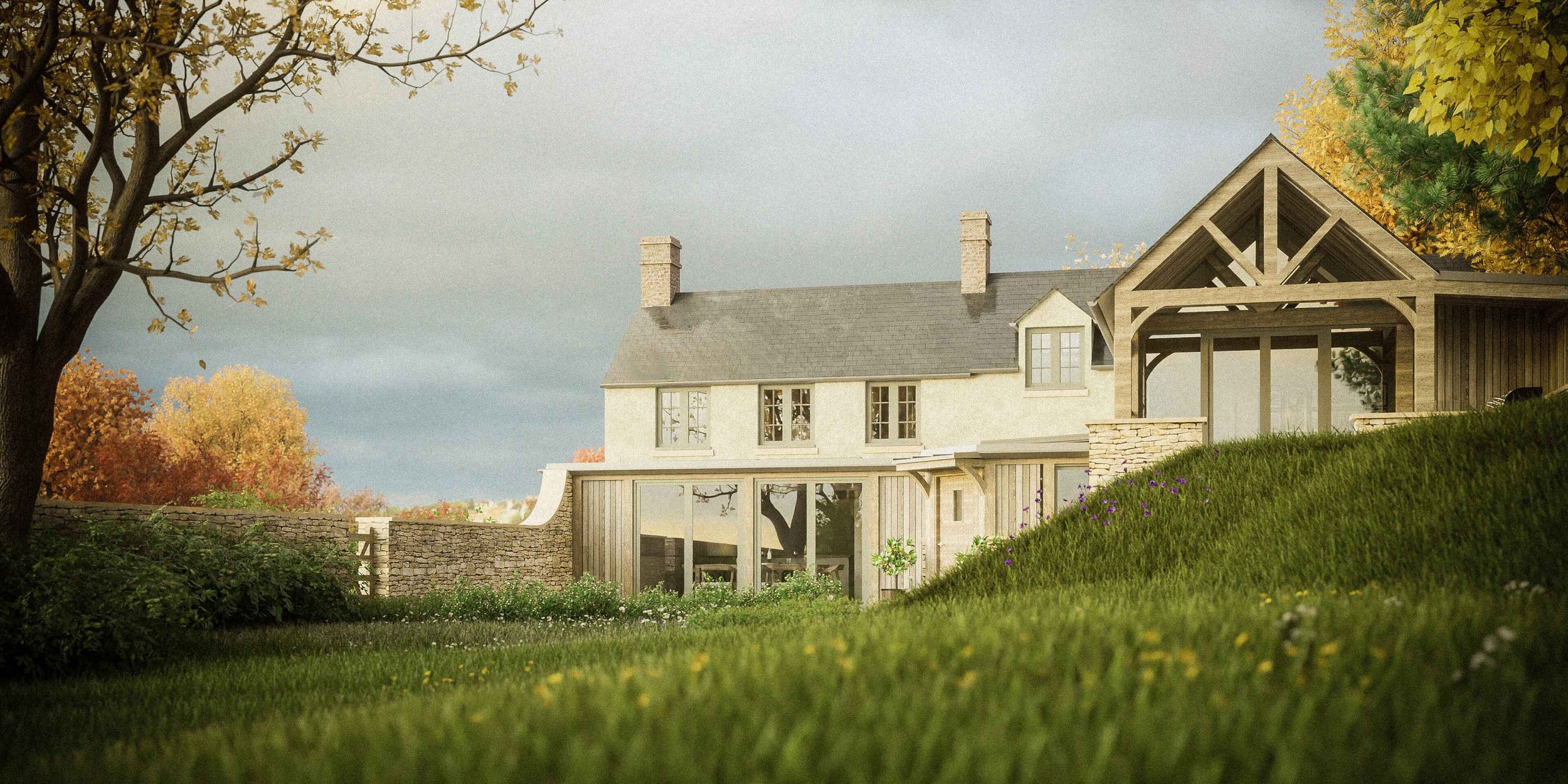
Creative & Sustainable Design for Residential Projects
Joshua Hovey is a RIBA Chartered Architect & Certified Passivhaus Designer, Serving Somerset, Gloucestershire and Surrounding Areas.
Sustainable & Innovative
New-Build
We help self-builders looking to design their dream eco-home, and land owners looking to maximise the potential of their plot. We have a proven track record of securing planning permission within challenging design constraints such as conservation areas, national parks, AONBs and near listed buildings.
Contemporary Extensions
We design beautiful contemporary extensions. Transform your living space by adding natural light, improving the connection with the outdoors and creating harmony between spaces.
Listed and Heritage Property Alterations
Do you have a listed building or period property which lacks natural light, feels disconnected from the outside and has poor flow between living spaces? We are experts at turning period properties into functional homes, customised for modern living.
Sensitively Designed Barn Conversions
We are architects skilled at working with listed buildings such as barn conversions, in conservation areas and AONBs and with complex design constraints. Let us help you to make the best use of your existing building.
Sustainable House Design | Joshua Hovey Architects
How to Get Started With Your Sustainable House Design Project
Defining Your Project Brief
When starting your sustainable house design project, the first crucial step is to clearly define your project brief. This involves outlining your specific sustainability goals and priorities. Ask yourself what aspects of sustainability are most important to you—whether it’s reducing energy consumption, using eco-friendly materials, or minimizing water usage. Be as detailed as possible about your needs and preferences, including any specific features you want, such as renewable energy systems or green roofing. A well-defined project brief will guide your design process and ensure that your sustainable house meets your expectations.
Understanding Basic Sustainability Principles
Before diving into the design process, it’s helpful to understand some fundamental sustainability principles. Sustainable house design focuses on reducing the environmental impact of your home while enhancing its efficiency and comfort. Key principles include energy efficiency, which involves using insulation, high-performance windows, and passive solar design to reduce heating and cooling needs. Water conservation is another principle, incorporating features like low-flow fixtures and rainwater harvesting to minimize water use. Additionally, selecting sustainable materials, such as recycled or rapidly renewable resources, helps to reduce your home’s overall carbon footprint.
Setting Clear Energy and Water Efficiency Goals
Incorporating energy and water efficiency into your project brief is essential. Decide on your targets for energy use and water conservation, such as aiming for a specific energy rating or reducing water consumption by a certain percentage. Consider features like energy-efficient appliances, advanced heating and cooling systems, and water-saving fixtures. Setting clear goals will help you make informed decisions throughout the design process and ensure that your home performs well in terms of both energy and water efficiency.
Choosing Sustainable Building Materials
When defining your project brief, include criteria for selecting sustainable building materials. Look for materials that have low environmental impact, such as those made from recycled content or those with certifications like FSC (Forest Stewardship Council) for responsibly sourced wood. Sustainable materials are not only better for the environment but also often offer enhanced durability and performance. Make a list of preferred materials and discuss them with your architect to ensure they align with your sustainability goals.
Integrating Design for Long-Term Sustainability
Sustainability is not just about the immediate impact but also about long-term performance. Incorporate design features that contribute to the durability and longevity of your home. This might include designing for easy maintenance, using high-quality materials that withstand the test of time, and planning for future upgrades. By thinking about the long-term sustainability of your home, you ensure that it remains efficient, comfortable, and eco-friendly for years to come.
By focusing on these steps, you can effectively define your project brief and integrate general sustainability principles into your house design. Clearly outlining your goals, understanding basic sustainability principles, setting energy and water efficiency targets, choosing sustainable materials, and planning for long-term sustainability will help you create a home that is both environmentally responsible and perfectly suited to your needs.









